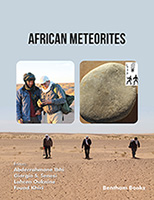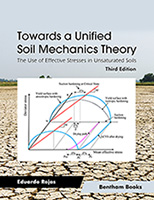Preface
The study of radon in homes is of utmost importance considering that radon has long been identified as the second major cause of lung cancer incidences after cigarette smoking in conjunction with the fact that people spend nearly 90% of their time indoors. Prior studies on radon have primarily focused on examining the different factors that influence the radon entry rates into a home. Considerable number of studies also modeled the radon entry rates into homes. However, a significant knowledge gap of the lack of a comprehensive study that focused in detail on the aspects of statistical metrics and radon distribution maps for a large area (such as an entire state) that are essential components of a comprehensive assessment of in-home radon problem coupled with the determination of performance of various mitigation systems using statistical tests in reducing the in-home radon levels prompted the authors to compile this book. This book is based on the homes and mitigation databases of the Ohio Radon Information System (ORIS) that comprised of 219,114 data points (1988-2012) and 39,858 data points (2002-2012), respectively. The ORIS is maintained by the Air Pollution Research Group (APRG) of the Civil Engineering Department at The University of Toledo in Toledo, Ohio, USA.
This book is prepared for those who wish to gain a better understanding of the radon problem assessment and mitigation in homes. Our intent is to provide a complete review of the radon problem in homes (Chapter 1), so that the reader acquires a basic understanding of the nature of radon problem. Included in this book are different statistical metrics and Geographic Information System (GIS) maps that summarize the problem of radon in Ohio (Chapters 2-3). Details on the statistics related to performance of different mitigation systems installed in Ohio homes along with a methodology to rank the performance of different mitigation systems are also incorporated in this book (Chapter 4). A summary of the significant findings from the radon assessment coupled with the mitigation systems performance is documented in the end (Chapter 5).
We are indebted to the former and current Civil Engineering graduate students of the APRG, at The University of Toledo, who were involved in this research over the last 30 years and developed the homes database that was used in this study. We appreciate the research grants awarded by the Ohio Department of Health (ODH) and the United States Environmental Protection Agency (U.S. EPA) to The University of Toledo, which made the development of a large radon homes database system possible. We thank Krothapalli Madhusha for her inputs in preparing the GIS maps in this book. We acknowledge ESRI® for providing the ArcGIS software that was used in the preparation of maps, and Microsoft® for providing the Excel spreadsheet that was used in computing the different statistical metrics, associated with radon concentration distributions in Ohio.
The book is likely to serve its intended purpose, even if one reader is able to understand the importance of examining the radon problem in home and get their homes tested and mitigated (in case of any exceedances) for radon. The views expressed in this book are those of the authors alone and do not represent the views of the organizations who, over the years, funded the collection of data.
ACKNOWLEDGEMENTS AND STATEMENT OF CONFLICT OF INTEREST
The authors thank the Ohio Department of Health (ODH) and the United States Environmental Protection Agency (USEPA) for awarding the research grants to The University of Toledo, which made the development of Ohio Radon Information System possible. The contributions of earlier investigators of the grants (Dr. Jim Harrell and Dr. Andrew G. Heydinger, and many graduate students who worked on this project over the years) are all greatly acknowledged. The authors also recognize the contribution of a number of staff members from the ODH. The authors thank Dr. H.R. Olesen for providing the BOOT v2.0 software, ESRI® for providing the ArcGIS software, Minitab® for providing the MINITAB 16 software, Microsoft® for providing the Excel software, and MathWorks® for providing the MATLAB 2010b software that were used in developing this book when performing statistical and geospatial analyses. The authors do not have any financial relationships with the software used in this paper. The views expressed in this book are those of the authors alone.
Ashok Kumar
Department of Civil Engineering
The University of Toledo
Toledo, OH 43606
USA
E-mail: akumar@utnet.utoledo.edu
&
Akhil Kadiyala
Department of Civil Engineering
The University of Toledo
Toledo, OH 43606
USA





